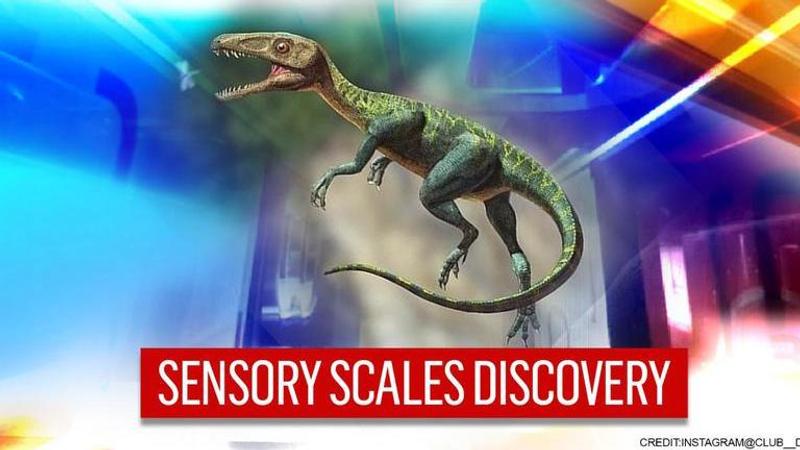Published 14:23 IST, October 6th 2020
Chicken-sized Juravenator Dinosaurs may have used sensory scales on tail to find food
Researchers in its latest study revealed that Juravenator Starki- a chicken size Dinosaur likely used their sensory scales on its tail to forage for food.

Researchers behind a recent study revealed that Juravenator Starki- a chicken-sized Dinosaur - likely used the sensory scales on its tail to forage for food. The sensory organs of the Dinosaur that lived in what is now Germany about 150 million years ago, are remarkably similar to those found on a crocodile, the study revealed. The sensory organs helped the animal suss out its environment as it paddled across the shallow lagoons of a prehistoric archipelago that once covered Europe.
According to reports, the only known fossil of the species Juravenator starki includes a largely complete skeleton and some preserved soft tissues with the skin around the tail that revealed a unique pattern on its scales.
Fossilized scales looked similar to integumentary sense organs of crocs
The circular knobs on the fossilized scales looked similar to integumentary sense organs (ISOs), which cover the bodies of modern crocodiles, the researched said. Crocodiles use these ISOs to detect the movements of prey around them as well as to gauge the temperature and acidity of the water, the study revealed.
Researchers have long assumed that dinosaurs did slightly more with their scales than just use them as protective coverings. Phil Bell, the author of the study and a paleontologist at the University of New England in Armidale, Australia said that the reality is that the scales are highly adapted organs that fulfill multiple functions and roles, adding that in order to see these things first-hand, and how Juravenator might have interacted with its environment based on its sensory capacity, is thrilling.
Bell along with co-author Christophe Hendrickx of the Unidad Ejecutora Lillo in San Miguel de Tucumán, Argentina, first examined the strip of concentric rings on the lower side of the tail. The authors suspected the different pattern was an effect of fossil preservation. Further examination with microscopes and UV light revealed they were similar in structure to the ISOs on crocodiles, Bell added.
Adding further Bell said crocodiles ISOs are quite unique, in that they are this sort of central dome surrounded by an almost moat-like ring. The ISOs commonly called touch spots or pressure-sensitive organs, and their construction is apparently identical to what we saw in Juravenator, Bell said. He continued to says if the Juravenator scales include ISOs, they’ll be the first sensory organs of any kind found in the skin of a dinosaur.
Updated 14:23 IST, October 6th 2020



